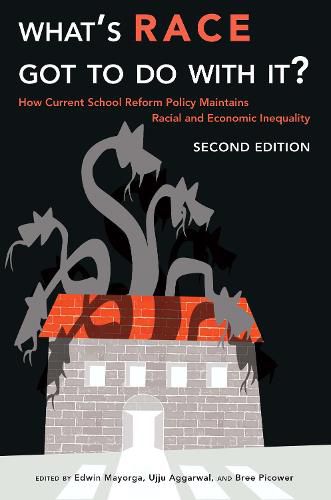Readings Newsletter
Become a Readings Member to make your shopping experience even easier.
Sign in or sign up for free!
You’re not far away from qualifying for FREE standard shipping within Australia
You’ve qualified for FREE standard shipping within Australia
The cart is loading…






This title is printed to order. This book may have been self-published. If so, we cannot guarantee the quality of the content. In the main most books will have gone through the editing process however some may not. We therefore suggest that you be aware of this before ordering this book. If in doubt check either the author or publisher’s details as we are unable to accept any returns unless they are faulty. Please contact us if you have any questions.
The first edition of What’s Race Got to Do With It (2015) addressed a moment when those working on the ground-activists, educators, young people, and families-were trying to understand and fight back against neoliberal education reforms (e.g., high stakes testing, school closings, and charter schools), while uncovering what race had to do with it all in the context of a supposedly post-racial United States. In the years since, the steady and grounded work of social movements has increased the visibility and critique of privatization, market-based reforms, and segregation; demonstrating the interlocking connections between racism and capitalism. In this period we have also seen an intensified attack on public education (alongside other public infrastructures) and a return to a more overt racism as we knew it. This new edition of What’s Race continues the examination of neoliberal education reforms as they are being rolled back (or reworked) to track the changes and continuities of recent years-revealing the ways in which market-driven education reforms work with and through race-and share grassroots stories of resistance to these reforms. It is hoped that this new edition will continue to sharpen readers’ analyses concerning what we are working to defend and what we are working to transform, and provides a guide to action that emboldens the collective struggle for justice.
$9.00 standard shipping within Australia
FREE standard shipping within Australia for orders over $100.00
Express & International shipping calculated at checkout
This title is printed to order. This book may have been self-published. If so, we cannot guarantee the quality of the content. In the main most books will have gone through the editing process however some may not. We therefore suggest that you be aware of this before ordering this book. If in doubt check either the author or publisher’s details as we are unable to accept any returns unless they are faulty. Please contact us if you have any questions.
The first edition of What’s Race Got to Do With It (2015) addressed a moment when those working on the ground-activists, educators, young people, and families-were trying to understand and fight back against neoliberal education reforms (e.g., high stakes testing, school closings, and charter schools), while uncovering what race had to do with it all in the context of a supposedly post-racial United States. In the years since, the steady and grounded work of social movements has increased the visibility and critique of privatization, market-based reforms, and segregation; demonstrating the interlocking connections between racism and capitalism. In this period we have also seen an intensified attack on public education (alongside other public infrastructures) and a return to a more overt racism as we knew it. This new edition of What’s Race continues the examination of neoliberal education reforms as they are being rolled back (or reworked) to track the changes and continuities of recent years-revealing the ways in which market-driven education reforms work with and through race-and share grassroots stories of resistance to these reforms. It is hoped that this new edition will continue to sharpen readers’ analyses concerning what we are working to defend and what we are working to transform, and provides a guide to action that emboldens the collective struggle for justice.